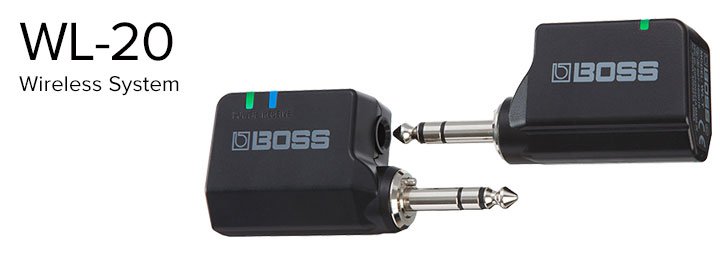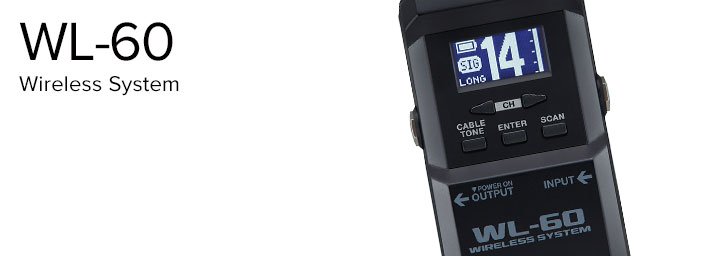Since their introduction in 2018, BOSS wireless products have quickly become a mainstay in the industry. From the easy to use bug-style WL-20 all the way up to the top of the line WL-60, there’s something for everyone!
But before we delve into the specifics of each one, let’s talk about some of the common features of the BOSS wireless systems.
Contributed by Ed Lim for Roland Corporation Australia
CLASS-LEADING SPEED
Passing your guitar through the wireless transmitter, which then converts it either into a digital or analog frequency signal which can then be sent through to the receiver and converted back into an analog audio signal requires a tiny, but measureable amount of time. This small lag between when you hit a note, and when it actually comes out the wireless receiver into your amp or pedalboard, is called latency.
Higher latency may result in a perceivable delay or disconnect between your playing and the guitar sound coming out of your amplifier, which can be distracting and detrimental to your playing experience.
As a practical example, the speed of sound is 343m/s. If you’re standing 1 metre away from your amp, the sound will take approximately 2.9 milliseconds to reach your ears.
By comparison, BOSS wireless systems offer a class-leading, ultra-low latency of only 2.3ms.
14 CHANNELS OF FREEDOM IN A WORLD OF WIFI CONGESTION
BOSS WL RANGE
WL-20
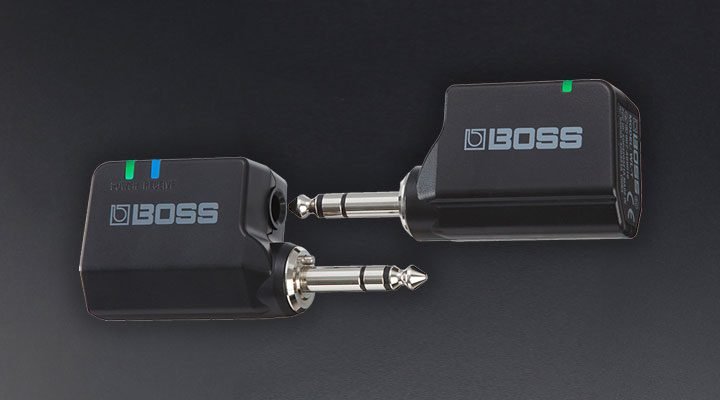
The easiest introduction to the world of wireless systems, WL-20 consists of a bug style transmitter and corresponding receiver, with a nominal operating range of 15m.
It’s very much plug and play – to pair, simply plug the two together, wait for the yellow light to stop flashing, and you’re ready to go. The unit’s auto-pairing feature automatically chooses the optimum frequency to operate on in any given room out of the 14 possible channels.
WL-20 also features built-in cable tone emulation, which reproduces the tone of using a 10 foot guitar cable.
To charge the internal rechargeable batteries, once again it’s as easy as plugging the transmitter and receiver together and connecting a USB cable to charge both at the same time.
4 hours charging time will give you 12 hours of battery life for the transmitter, and 10 hours for the receiver.
A useful thing to note is that when storing the wireless system for long periods, it’s best not to connect the transmitter and receiver. Once the automatic pairing function is complete, the system goes into a standby mode where the LED flashes once every few seconds. This does consume a small amount of battery and will eventually run down the charge.
WL-20L

WL-50
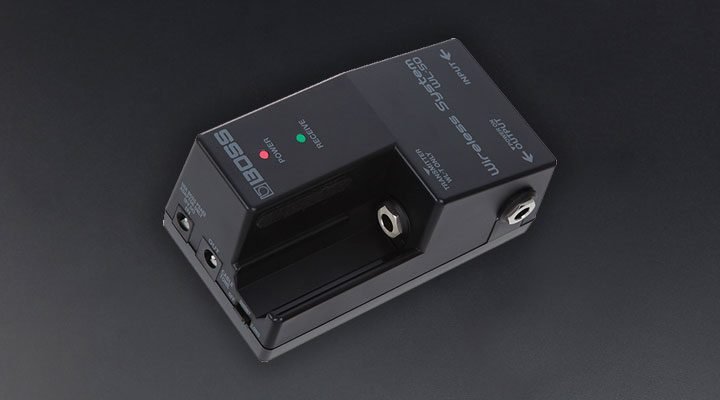
The WL-50 is designed for players who want to integrate their wireless system into their pedalboard. You may have noticed that the receiver shares a similar size and form factor with the iconic BOSS compact pedal!
It can be powered via 9V adaptor or 2 AA batteries for up to 10 hours. If you’re using an adaptor, the WL-50 can be used as a power distribution hub to power other pedals via daisy chain.
Once again, it’s easy to pair – just dock the transmitter into the receiver and wait until the yellow light stops flashing.
The receiver has three options for switchable cable tone – off, short and long.
With cable tone in the OFF position, the WL-50 is suitable for use low impedance sources such as guitars with active preamps. This is the same as the WL-20L.
With cable tone on the “short” setting, the cable tone simulation reproduces the tone of using a 10 foot cable. This is the same as the WL-20.
On the “long” setting, the cable tone simulation reproduces the tone of using a 20 foot cable.
This gives you the freedom to swap between active and passive pickup guitars, or to get a little more of the high end roll-off associated with long cables if that’s what you’re used to hearing with your wired rig.
WL-60

The WL-60 is the latest in the range of BOSS wireless units. It has the same class-leading low latency as the rest of the range, and features a pedalboard-mountable receiver, and a belt-pack style transmitter, each with an LCD screen.
The feature set of the WL-60 is in direct response to user feedback on the WL-20 and WL-50.
The auto-pairing feature on the WL-20 and WL-50 is really handy for plug and play, but for some users looking to utilise multiple units in their band, it can be easier to know specifically which channel each player is on.
With that in mind, the WL-60 incorporates a visual readout so you can see which channel you’re on.
You can auto-select the best channel for the room, or if you want manually select the channel so that bands with multiple users can assign each player to their own specific channel, to avoid interference and crosstalk.
WL-60 incorporates the same switchable cable tone simulation as the WL-50 and has the same nominal range of 20m.
For some users, the wireless bug design of the WL-20 and -50 means that on certain guitars (for example Gibson SGs), the transmitter sticks directly out from the guitar body, which puts it at risk of being damaged during playing.
The WL-60T addresses this with a body-pack form factor, which allows it to be safely tucked away behind the guitar strap.
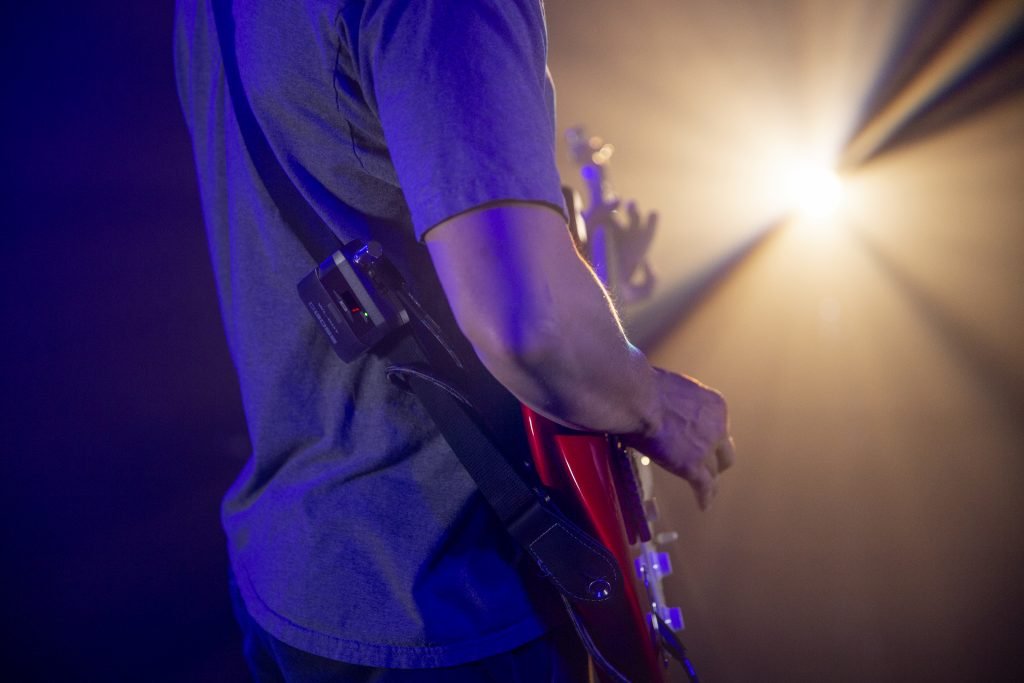
Unlike most other body-pack transmitters, the WL-60T does not require a separate pouch. It attaches easily and securely onto your guitar strap with the built-in clip, which can be reversed depending on which orientation you prefer.
Many other body-pack transmitters require a proprietary cable between it and the guitar. But with WL-60, you can use any instrument cable, and in fact, a high-quality 2-foot BOSS cable is already included with it.
For gigging musicians, the WL-60T transmitter uses 2 AA batteries for up to 25 hours playing time. This means that if you’ve run out of batteries just before a gig, you can easily swap in fresh ones and be ready to go, rather than waiting for internal batteries to recharge.
SUMMARY
RELATED PRODUCTS
